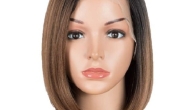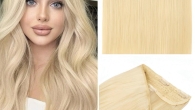
A Comprehensive Guide to Washing Your Wigs
Wigs offer a fantastic way to express yourself, change up your look, or protect your natural hair. But just like your own hair, wigs require proper care to maintain their vibrancy, style, and longevity. One crucial aspect of wig care is washing. Knowing how to wash your wig properly ensures it stays clean, tangle-free, and continues to look its best.
This comprehensive guide delves into everything you need to know about washing your wig, from understanding the different wig types and their specific cleaning needs to the step-by-step washing process and essential tips for drying and storing your wig.

Understanding Your Wig: A Foundation for Proper Care
The first step to washing your wig effectively involves understanding the type of wig you own. Here’s a breakdown of the two main wig categories and their cleaning considerations:
- Human Hair Wigs: Made from real human hair, these wigs require a gentle yet thorough cleaning process similar to how you would wash your own hair.
- Synthetic Wigs: Constructed from synthetic fibers like nylon or polyester, synthetic wigs generally require less frequent washing compared to human hair wigs. However, they still need cleaning to remove product buildup, dust, and sweat.
Additional Wig Considerations:
- Hair Type: Straight, curly, or wavy hair textures might require slightly different detangling techniques during the washing process.
- Cap Construction: Wigs come in various cap constructions, such as lace front wigs or capless wigs. Knowing your wig’s cap type helps determine the most appropriate handling methods while washing.
By understanding your specific wig, you can tailor the washing process to ensure optimal results.
Gathering Your Arsenal: Essential Supplies for Wigs Washing
Before diving into the washing process, ensure you have the necessary tools:

- Wig Shampoo and Conditioner: Opt for products specifically formulated for wigs. Regular hair products might contain harsh chemicals that can damage wig fibers.
- Basin or Sink: A clean basin or sink large enough to comfortably submerge your wig is ideal.
- Towel: A clean, soft towel will be used for drying.
- Wide-Tooth Comb: This helps detangle the wig hair gently without causing breakage.
- Optional: Wig stand (for drying), spray bottle (for rinsing), and a showerhead with a detachable spray nozzle (for easier rinsing).
Having the right tools on hand streamlines the washing process and protects your wig.
Washing Your Wigs: A Step-by-Step Guide
Now that you’ve gathered your supplies and identified your wig type, let’s walk through the washing process:
-
Detangling: Before getting your wig wet, detangle the hair thoroughly using a wide-tooth comb. Start at the ends and gently work your way up to the roots to avoid pulling or breaking the hair strands.
-
Prepare the Washing Solution: Fill your basin or sink with cool or lukewarm water. Add a small amount of wig shampoo and dilute it well.
-
Submerge and Swish: Gently submerge your wig into the soapy water and swish it back and forth for a few minutes. Avoid vigorous scrubbing or agitation, which can cause matting or damage the wig cap.
-
Targeted Cleaning (Optional): For stubborn dirt or product buildup on specific areas like the lace front (for lace front wigs), you can gently massage those areas with diluted shampoo.
-
Rinse Thoroughly: Rinse your wig with clean, cool water until all shampoo residue is removed. You can use a spray bottle or a detachable showerhead for better control over the water flow.

For Human Hair Wigs:
-
Conditioning: Apply a wig conditioner specifically formulated for your hair type (straight, curly, etc.) following the product instructions. Leave the conditioner on for a few minutes to replenish moisture and boost manageability.
-
Final Rinse: Rinse the conditioner out completely with cool water.
For Synthetic Wigs:
Skip steps 6 and 7 as synthetic wigs generally don’t require conditioning. However, if your synthetic wig feels dry or tangled after washing, you can use a detangling spray designed for synthetic hair.
Drying Your Wig with TLC
Once the washing process is complete, it’s crucial to dry your wig properly to maintain its shape and prevent damage:
-
Gently Squeeze Out Excess Water: Hold the wig by the cap and gently squeeze out excess water without wringing or twisting. You can also wrap the wig in a clean towel and press down to absorb moisture.
-
Air Drying is Best: Allow your wig to air dry on a wig stand or a well-ventilated surface. Avoid using direct heat sources like blow dryers or curling irons, as these can damage the wig fibers.
-
Reshape and Style (Optional): Once the wig is mostly dry, you can gently reshape it with your fingers or a wide-tooth comb to restore its original style. If your wig has a curly texture, you can scrunch it gently to encourage curl definition as it dries completely.
-
Storing Your Wig: When your wig is completely dry, store it properly to prevent tangles and dust accumulation. Here are some storage options:
- Wig Stand: This is the ideal option for maintaining the wig’s shape. Place the wig on a wig stand and store it in a cool, dry place away from direct sunlight.
- Hair Net: If you don’t have a wig stand, you can store your wig in a hair net to prevent tangles. Place the wig in the net and store it in a breathable container.
- Satin or Silk Scarf: Wrapping your wig in a satin or silk scarf can help prevent friction and frizz.
Avoid storing your wig in plastic bags, as this can trap moisture and lead to mildew growth.
Maintaining the Magic: Essential Wigs Care Tips
By following these additional tips, you can extend the lifespan of your wig and keep it looking its best:

- Wash Frequency: Wash your wig based on how often you wear it and your lifestyle. As a general guideline, wash human hair wigs every 1-2 weeks and synthetic wigs every 4-6 weeks.
- Minimize Heat Styling: Excessive heat styling can damage wig fibers. If heat styling is necessary, use the lowest heat setting possible and apply a heat protectant spray designed for wigs.
- Brush Gently: Use a wig brush specifically designed for your wig type to remove tangles and maintain smoothness. Avoid brushing your wig when it’s wet, as this can cause breakage.
- Deep Conditioning (Human Hair Wigs Only): Occasionally treat your human hair wig to a deep conditioning treatment to replenish moisture and prevent dryness.
The Final Stitch: Unveiling the Secrets to Long-Lasting Wigs
Washing your wig properly is just one aspect of comprehensive wig care. By understanding your wig type, using the right products, and following these essential tips, you can ensure your wig stays beautiful, tangle-free, and retains its style for a longer period.

Now that you’re armed with this knowledge, you can confidently wash your wig and keep it looking its best, allowing you to continue expressing yourself and rocking your unique look!












Leave a Reply